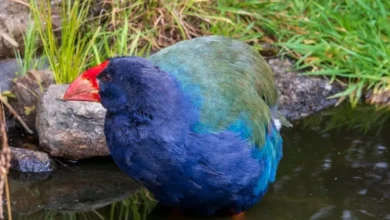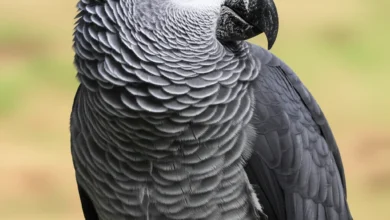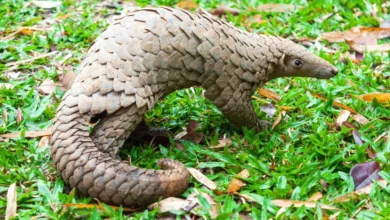The Orange Nurse Shark of Costa Rica: Unpacking a Marine Biological Anomaly
In the summer of 2024, sport anglers fishing the waters near Costa Rica’s Tortuguero National Park made a breathtaking discovery: a vibrant, deep-orange nurse shark with striking white eyes. Photographed and released, the images sparked global interest and led to a formal scientific publication in 2025. This is what we know about this extraordinary marine creature.
### What Was Discovered? A Rare Color Morph
The animal is not a new species but a common Caribbean nurse shark (Ginglymostoma cirratum). What sets this individual apart is its unprecedented coloration—a intense, uniform orange hue and leucistic (white) eyes.
Scientists identified this condition as xanthism (an excess of yellow or orange pigment) combined with suspected albinism (a lack of dark pigment). This combination, termed “albino-xanthochromism,” is exceptionally rare, marking the first documented case of xanthism in any shark, ray, or skate within the Caribbean Sea.
### Why Is the Shark Orange? The Science of Xanthism
Shark coloration typically comes from melanin (for dark tones) and other pigments for yellows and reds. In this case, a genetic mutation suppressed the darker melanin, allowing the orange and yellow pigments to dominate completely.
-
Xanthism: This condition caused the overwhelming orange coloration across the entire body.
-
Albinism/Leucism: The lack of pigment in the eyes resulted in their ghostly white appearance, supporting the theory of a dual pigment anomaly.
This rare genetic combination explains the shark’s “creamsicle” color and its survival to adulthood, a point that intrigues scientists.
### Can a Bright Orange Shark Survive in the Wild?
Intuitively, a bright orange shark should be at a disadvantage, yet this individual was a healthy adult approximately two meters (six feet) long. Its survival can be attributed to two key factors:
-
Nurse Shark Behavior: These are slow-moving, bottom-dwelling sharks that rest during the day and forage at night. They do not rely on speed or open-water camouflage like other species. Their ability to pump water over their gills while stationary allows them to hide effectively even with bright coloration.
-
Low-Light Hunting: The shark forages in dim, crepuscular environments where its orange color may not be as conspicuous as it appears in well-lit surface photos.
### Origins of the Orange Shark: Geography and Genetics
The “origin” of this shark can be answered in two ways:
-
Geographic Origin: The shark was caught and released near Tortuguero National Park, Costa Rica. As a site-faithful adult, it is unquestionably a member of the local Caribbean population.
-
Biological Origin: The coloration is almost certainly the result of a rare genetic mutation affecting its pigment pathways. There is no current evidence that pollution, diet, or water temperature caused this anomaly. It is considered a random, one-in-a-million genetic event rather than an indicator of a new population.
### Scientific Significance and Conservation Implications
This discovery is more than a viral curiosity; it has real scientific importance:
-
Expanding Knowledge: It documents the extreme range of natural variation within a well-known species.
-
Public Engagement: The shark serves as a captivating ambassador for marine science, drawing public attention to marine biodiversity and conservation efforts in Costa Rica.
-
Highlighting Protected Areas: The sighting within a productive national park underscores the value of marine protected areas in sustaining healthy ecosystems where such rare wonders can be observed and studied.
### FAQs About Costa Rica’s Orange Nurse Shark
Q: Is this a new species of shark?
A: No. It is a common nurse shark with an extremely rare pigmentation condition called xanthism.
Q: Could there be more orange sharks?
A: It’s possible, but they would be exceptionally rare. If more are documented, it could suggest a heritable trait exists in the local population.
Q: Was the shark harmed by its coloration?
A: The fact it reached adulthood suggests it successfully navigated any potential disadvantages, such as increased visibility to prey or predators.
Q: What happened to the shark after it was found?
A: It was photographed, measured, and released alive by the anglers, following best practices for catch-and-release fishing.
### Conclusion: A Reminder of Ocean Mysteries
The orange nurse shark of Costa Rica is a powerful reminder that the ocean still holds fascinating mysteries. This single, extraordinary animal provides valuable insight into genetic diversity and underscores the importance of conserving marine habitats like Tortuguero National Park, where such incredible discoveries are still possible.
Sources:
-
Macías-Cuyare, M. et al. (2025). First record case of free-living xanthism in the nurse shark… Marine Biodiversity.
-
Scientific summaries from IFLScience, The Independent, and DIVERNET.




